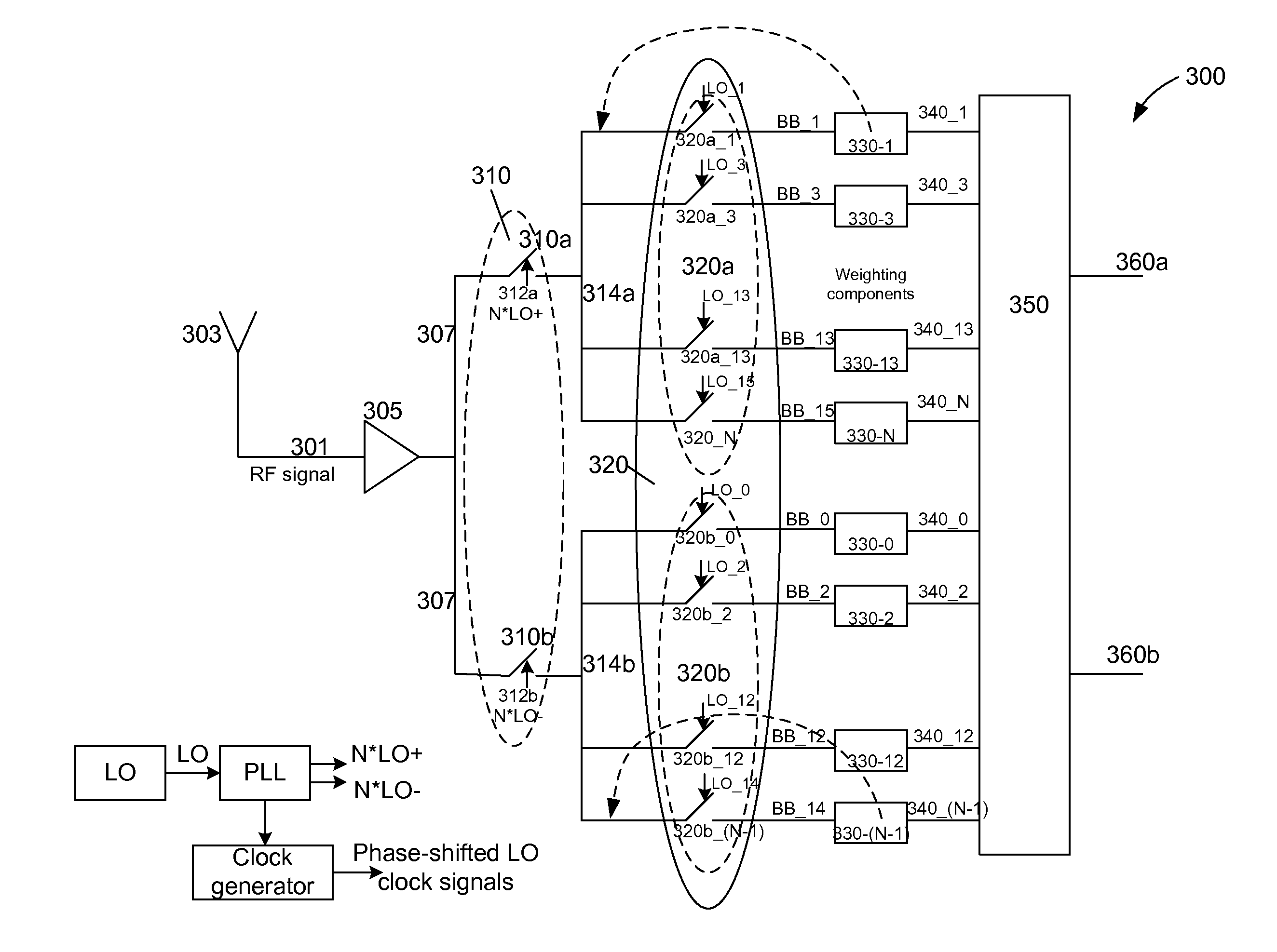Harmonic Rejection Mixer Architecture with Reduced Sensitivity to Gain and Phase Mismatches
a mixer and harmonic rejection technology, applied in the field of radio frequency receivers, can solve problems such as phase offset and duty cycle errors, phase and duty cycle mismatches, and limit the ultimate rejection achievable,
- Summary
- Abstract
- Description
- Claims
- Application Information
AI Technical Summary
Benefits of technology
Problems solved by technology
Method used
Image
Examples
Embodiment Construction
[0029]In accordance with embodiments of the present invention, both gain errors and phase and duty cycle errors are minimized to improve harmonic rejection beyond what can be achieved by minimizing gain and phase errors in isolation. A harmonic reject mixer in accordance with the present invention is implemented as a bank of mixers that include at least two switching stages (also referred to herein as mixing stages). Phase and duty cycle errors are minimized by using a mixer that includes at least 2 switching stages. The switches in the first switching stage switch at a higher rate of N times the LO frequency, where N is an integer. The second switching stage includes N switches each of which is controlled by one of the N phases of the non-overlapping LO phases. The N phases of the LO of the second switching stage are aligned to the N*LO signal. Accordingly, the RF signal sampled at the output of each switch of the second switching stage is dependent only on the N*LO switches (symbo...
PUM
 Login to View More
Login to View More Abstract
Description
Claims
Application Information
 Login to View More
Login to View More - R&D
- Intellectual Property
- Life Sciences
- Materials
- Tech Scout
- Unparalleled Data Quality
- Higher Quality Content
- 60% Fewer Hallucinations
Browse by: Latest US Patents, China's latest patents, Technical Efficacy Thesaurus, Application Domain, Technology Topic, Popular Technical Reports.
© 2025 PatSnap. All rights reserved.Legal|Privacy policy|Modern Slavery Act Transparency Statement|Sitemap|About US| Contact US: help@patsnap.com



